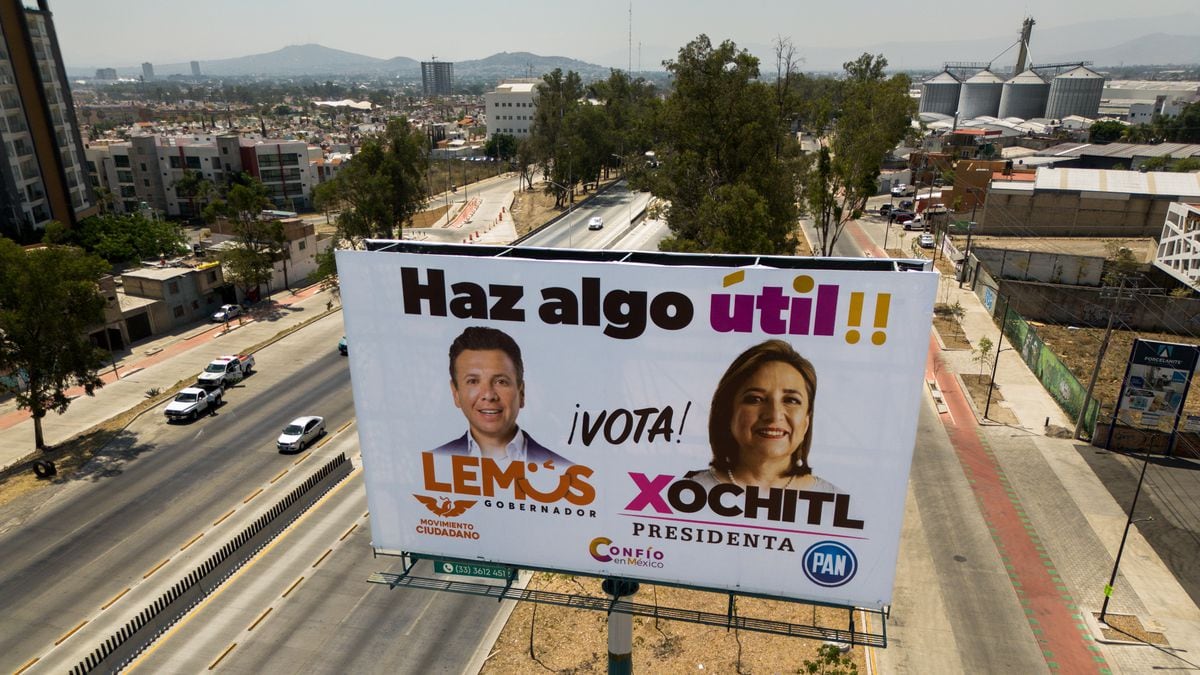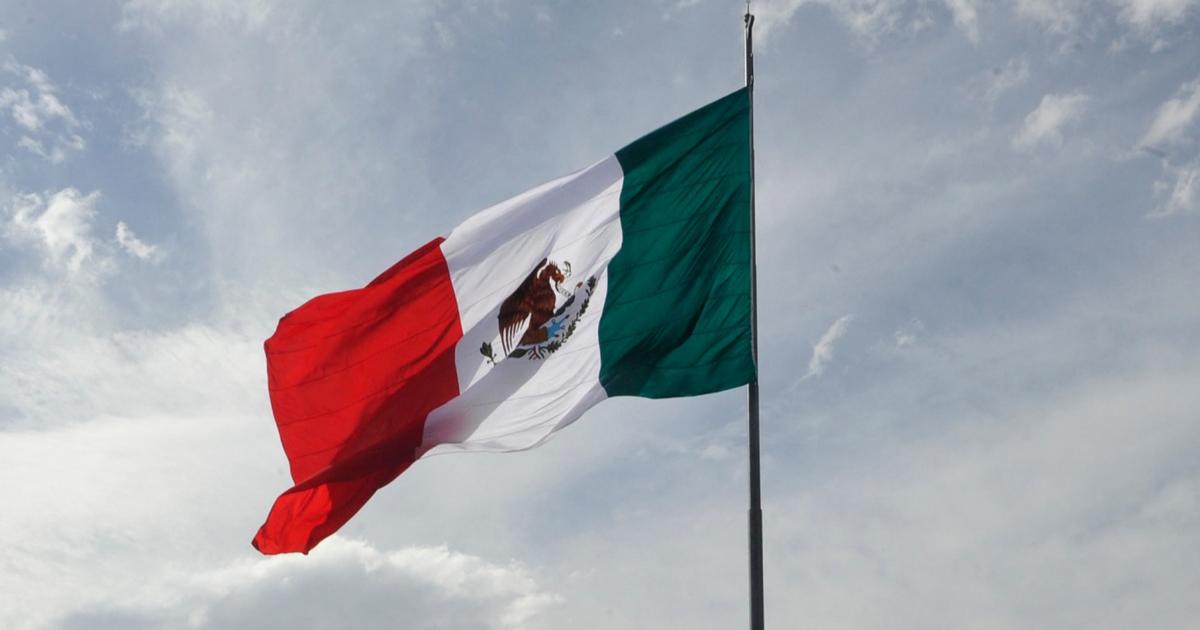More than 15 million Mexicans will go out to vote this Sunday, June 4. The elections in Coahuila and the State of Mexico are shaping up to be the last face-to-face clash of two broad coalitions around the figure of Andrés Manuel López Obrador before next year's presidential elections. Morena, the president's party, seeks to confirm that it is the new dominant force in Mexican politics and win for the first time in both states with its allies, the Labor Party (PT) and the Green Ecologist Party of Mexico (PVEM), in the coalition Together We Make History. The Institutional Revolutionary Party (PRI) puts into play two of its historic strongholds, where it has governed without interruption for 94 years, and heads the opposition alliance Va por México alongside its old rivals and new partners, the right-wing National Action Party (PAN) and the leftist Party of the Democratic Revolution (PRD). In a country accustomed to political fragmentation, this year's state elections represent an atypical vote, in which citizens are called to choose between two great poles of power, in a kind of bipartisanship that only a few years ago would have seemed unusual. On the one hand, the ruling bloc; on the other, the opposition.
Both sides are playing two key places for their aspirations in 2024, when the country will elect a new president and the two Houses of the federal Congress will be renewed. Beyond the results, this Sunday's elections are the acid test for the two political coalitions and a final point of reference to know how competitive they are against their adversaries, how attractive to voters and how necessary they are for the survival of the parties themselves individually.
Coahuila: the costs of the division
It was thought that the State of Mexico would be the most emblematic election, the spyglass that would allow the contending blocs to see into the distance and take accounts of their possible balances by 2024. But, surprisingly, it has been the battle for the northern state of Coahuila that has best synthesized the magnitude of the war. The PRI candidate Manolo Jimenez starts as a favorite and arrives at election day backed by a solid alliance of his party with the PAN and the PRD. After several months of internal turbulence in the coalition itself, largely due to the lurches of a very volatile PRI leader, Alejandro Moreno, Va por México has become very clear in the fact that only the union of the three parties can be competitive and hurt the ruling bloc. The demonstration was the 2021 midterm election, where Va por México dealt a heavy blow and snatched from Morena and its allies the qualified majority in the federal Congress and half of the mayoralties of Mexico City.
In contrast, López Obrador's movement has arrived pulverized in the election of Coahuila. His partners of the PT and the PVEM presented their own standard-bearers, in an internal struggle that in recent days had signs of rupture and that already announces a more than probable electoral defeat. Voting intention measurements show that Morena's candidate, senator and coal businessman Armando Guadiana, is in second place, and that the PT's standard-bearer, former federal undersecretary of security Ricardo Mejía, has snatched supporters from him to take them to his own cause. Added together, the electoral preferences that Guadiana, Mejia, and Lenin Perez — the Green Party candidate — have separately had been enough to achieve even a technical tie with respect to the PRI rival.
Claudia Sheinbaum and Mario Delgado went to Coahuila to show their support for the Guadiana candidate.
The leader of Morena, Mario Delgado, launched a threat to the national leaders of the PT and the PVEM: if their candidates did not decline in Coahuila, they would risk the alliance of the three parties by 2024. At the last moment, the PT and the Green Party abandoned Mejía and Pérez and backed Guadiana. The maneuver, more desperate than effective — ballots are already printed with the names of the three candidates — showed how necessary Morena needs the support of its political allies, perhaps more than the ruling party would like to concede.
The journalist and political analyst Javier Garza defines it like this: Coahuila is the "black mirror of Morena", where, when he looks out, he sees his ominous future if in 2024 he arrives divided, not only from his allies, but internally, after the definition of the presidential candidacy. "What is happening in the State of Mexico and in Coahuila is the same: a polarization where half of the voters want to vote for López Obrador's project and the other half want to vote against him. Only in the State of Mexico there is a Obradorista option and an anti-Obradorista option, and in Coahuila there are three Obradorista options and only one opposite. Then the vote is dispersed. It is the most revealing reading, because it shows how Morena and the opposition have to assume the strategy towards 2024. Morena cannot afford fissures, divisions, tantrums or disagreements," Garza said in an interview.
The historical figures of the vote of each party in Coahuila show that none could, by itself, comfortably beat the opposite rival, and at the same time explain the need for their alliances. The PRI and the PAN used to be rivals in very even disputes. In the last gubernatorial election, in 2017, in which both parties ran candidates, the PRI won the elections for National Action by a minimum margin of 2.8%. In that election, Morena came in a distant third place 20 points down.
Manolo Jiménez in the streets of the Loma Linda neighborhood (Saltillo), on May 20, 2023.Mónica González Islas
The electoral geography began to move from 2018, when López Obrador arrived at the Presidency of the Republic, riding the wave of a movement that questioned the corruption practices of the old Mexican parties. For the 2021 election of federal deputies, Morena had sent the PAN to third place in Coahuila. Although in those elections PRI, PAN and PRD already contended as allies at the federal level, the votes obtained by each party demonstrate the change of political balances in the State. Morena became that year the second political force, with 431,000 votes, double those obtained by the PAN, and at a distance of six points below the PRI, the ruling party, that of the moreirato, a term coined in the State to refer to the governments of the brothers Humberto and Rubén Moreira (2005-2011 and 2011-2017). who broke state finances with a mega-debt and headed administrations embroiled in corruption scandals.
"I am not seeing a resounding PRI victory. It is very clear that half of Coahuila does not want the PRI to govern, and that is a trend that has been manifesting itself for at least a decade," Garza explains. "The PRI has managed to maintain itself thanks to certain alliances, certain political operations or the fact that its rivals do not give one, but not necessarily because it imposes itself overwhelmingly. One reading of the election is that the PRI is going to win by a landslide, but in reality half the people don't want the PRI. I don't know if the party is going to draw a lesson from that or is going to take the victory with arrogance," he adds.
State of Mexico: the most difficult test for the opposition
"The president knows that our unity is pure poison for his autocratic project and that we can beat him. Morena is a giant with feet of clay." This is how Jesus Zambrano, national president of the PRD, justified the decision to join forces with his former rivals from the PRI and the PAN. Va por México emerged in December 2020, six months before the midterm elections and two years after the tsunami that swept through the traditional system and sealed López Obrador's arrival to power. Despite the questioning of the militants themselves and the old differences that remain as open wounds, the coalition has survived under the implicit recognition that none of the members is a separate competitive option, a notion confirmed by the results in 2021 and that seeks to be replicated in this year's elections. "Coahuila went from being lost to being a state won with a very wide margin. And the State of Mexico went from being a lost state by a wide margin to being very competitive," summarized Marko Cortés, the PAN leader, last February.
Supporters of Delfina Gómez in the Chalco Valley (State of Mexico), on May 28. Marco Ugarte (AP)
However, repeating the alliance in Coahuila and the State of Mexico was not an automatic decision. The painful result of last year's local elections, in which Va por México took only two of six governorships in dispute (Aguascalientes and Durango), caused doubts, which were multiplied by the frictions, scandals and suspicions of treason carried out by Alito Moreno. The alliance had shown that it could act as a "containment bloc" in Congress and in the campaigns, but the main unknown for the opposition remains whether the union of forces, the most traditional notion to coalesce, is enough to win elections and not only to slow down the electoral progress of Morena. Alito asked for that vote of confidence from his partners and the PRI has assumed the task of defending two former strongholds, where it has never lost but which today are at risk.
In the State of Mexico, the alliance was tied up in direct negotiations with the governor, Alfredo del Mazo, de facto head of the party at the state level. The Mexican PRI, unlike the national PRI, acts as a more compact, hierarchical and more bureaucratized body, and revolves around the dwindling but still powerful Atlacomulco Group, the caste that has ruled the state for decades. In that period of great hegemony, the PRI used to buy the will of the rest of the parties that hindered it. In reality, the opposition in the Edomex did not exist or was testimonial, until the emergence of Morena and its bloc, over which López Obrador exercises strict tutelage.
The leaders of the PRD, PAN and PRI: Jesús Zambrano, Marko Cortés and Alejandro Moreno in Mexico City, on May 2, 2022.Andrea Murcia (Cuartoscuro)
"In election periods, the State of Mexico becomes a powerful electoral structure that until now has been invincible. No one has been able to beat him, by hook or by crook, in the purchase or coercion of the vote, in threats, in consents or in pressure on electoral structures," says economist and sociologist Bernardo Barranco. "Now we are facing a very atypical election, because it is a state election against another state election: for the use of public resources, the use of personnel, the use of social programs, the use of the media machine. For the first time in the history of the State of Mexico, the PRI is facing a rival as powerful as itself."
That is much of what is at stake for Va por México, especially in the state with the greatest electoral weight in the country and where Morena, unlike what happened in Coahuila, was able to build a unity candidacy with the PT and the Green, without fissures. In a field where the operation of the election and the mobilization of their bases is key, the PRI, the PAN and the PRD face one of their biggest obstacles: they continue to look for candidates who can agglomerate the vote separately from their militants and who are also attractive enough for nonpartisan voters. the disenchanted, those who are not sure about going out to vote.
The PRI member Alejandra del Moral has tried to settle the old differences, but the tricolor letterhead continues to be a heavy slab when it comes to selling itself as the option of "change" and "citizen." The coalition is so broad that it has made the balance too thin: its candidates have to speak to the PRI, but also to the militants of the PAN and the PRD, to finally convince a citizenry that is increasingly demanding. Va por México has a double challenge: to confirm that it is a competitive option and, in addition, a legitimate representative of the sectors of the population that do not agree with López Obrador's management but do not necessarily feel represented by the coalition. And it has to do so at a key political moment, almost a year away from 2024, and with the pressure to defend a historical legacy.
A PRI supporter waves her flag at an Alejandra del Moral rally in front of Naucalpan's municipal palace on April 21. Mario Jasso (Cuartoscuro)
On the other hand, Delfina Gómez is much clearer about what she represents and has opted to manage her advantage and not make mistakes. Morena is convinced that unity is key to consolidating an unprecedented expansion and that it has allowed him to triple the number of states where he governs since the beginning of this six-year term. As long as its rivals are weakened, the greatest risk of derailment remains within and remains the greatest imponderable heading into 2024.
Election night will be the culmination of two months of campaigning, the moment to make a show of force and declare victory over rivals. But the next morning will mark the starting signal in the race for the presidency, when both blocs will begin the arduous task of defining who will compete and how their candidates will be defined, and even whether those alliances are sustainable or not, in light of the results of this June 4.
Subscribe hereto the newsletter of EL PAÍS Mexico and receive all the informative keys of the news of this country



/cloudfront-eu-central-1.images.arcpublishing.com/prisa/CTFMT7S25JCCFJTYWVOMNODAVY.JPG)





